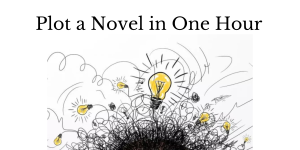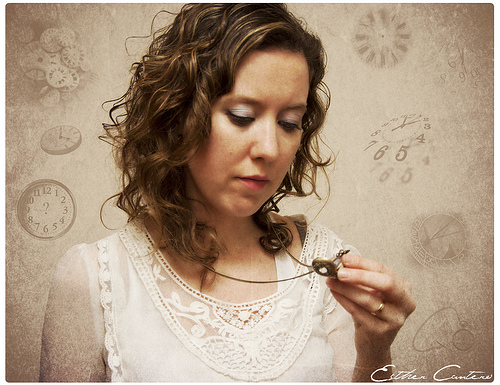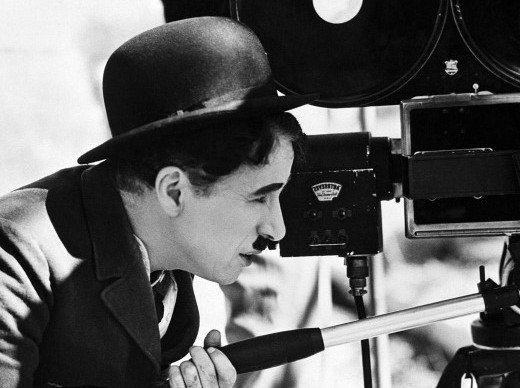How to Determine Your Novel’s Time Span
It’s important for writers to consider how much time will be covered in their novel for their characters. Why is this so? Because, novels and novellas, as is true for most movies and plays, focus on (usually) one character responding to a situation that has come to their attention near the start of the story.
This is basic, traditional, expected story structure. Of course there are going to be exceptions; any experimental structure will veer outside this “formula.” But it’s true that, for most stories, Michael Hauge’s description applies: A novel is about one character pursuing a short-term goal.
This goal develops due to an inciting incident that occurs near the start of the story (sometimes called a crisis or opportunity). Take a look at just about any successful novel or movie, and you can easily identify this inciting incident. I can’t think of any story that doesn’t have one.
This is all about the premise I’ve been writing and teaching extensively on in recent months. It’s crucial writers understand what a premise is, what makes a great premise, and why they need a terrific story hook. If you don’t know all this, it would behoove you to read some of my blog posts on this topic (just do a search for “premise” in the search bar!) and watch the two-hour in-depth workshop of premise HERE.
Once you lock in your premise, this situation that crops up requiring your character to respond and “do something about,” a certain amount of time has to pass for the character to reach (or fail to reach) the goal for the story. A short story or novella may cover a few hours or days for completion. However, a long novel may also cover a brief time span like that.
Dan Brown’s thriller Angels and Demons covers, at most, two days. The high-stakes situation launches at the opening, with a dangerous canister of antimatter stolen that will blow up in twenty-four hours and destroy the Vatican if it isn’t retrieved. Thrillers usually have a very short timeline (fuse), which keeps the pacing fast and furious amid high stakes.
This is one great example that shows why understanding your genre is crucial.
Take a look at novels in your genre. Try to figure out how much time passes from cover to cover, from scene to scene. Best sellers are rarely going to skip weeks and months between scenes or go on for years from start to finish (I’m talking about current best sellers, and that’s what you need to look at. Not novels written fifty years ago!).
Factors to Consider
When considering how much time to cover in your novel, here are some factors to keep in mind:
- Genre (as mentioned) should determine the time span and pacing of the story. A thoughtful, slow-building relational story may cover more time (months) as readers stroll through the pages and grow to care for the characters. Keep in mind, there is always a plot goal building and rising to an important, resolving climax in every story!
- Stakes: Every story should have high stakes for the character because it’s centering on what that character cares most about. However, global stakes with a ticking clock should be packaged in a story with a short fuse, and stories that are more character-driven should take longer to allow for those characters to deepen along with their relationships and conflict.
- Plot: Be careful regarding your plot. If you have Joe dealing with an issue in his hometown, then partway into the story you relocate him elsewhere and he has to basically start a new life, you may be dragging out your plot goal and story over way too much time for there to be a tight build of story toward the climax.
The key is to keep the plot concise, and while the goal may change as the story progresses, every step should be leading toward that ultimate climax. Often long plots covering a lot of time reveal boring, unnecessary scenes and action that aren’t directly related to or impacting the plot goal. Again, this is all about focusing on the premise. What the story is really about.
Some time ago, out of curiosity, I went through about a dozen of my novels, of various genres, and figured out how much time passed in my novels and novellas. I knew going into writing my two novellas, Wild Horses, Wild Hearts (about 20k words) and Wild Secret, Wild Longing (55k words), that I’d need a short timeline. I certainly wasn’t going to cover months or years in few pages. Why? Because the scenes would be sketchy and superficial, and my character arc and development would be shallow.
Keeping those novellas covering only a few days allowed for rich detail of the exterior and interior landscapes of character and setting to come to life.
My longer novels, whether fantasy or relational drama or historical Western romance, in general covered 3-4 months from start to finish. I figured that must be what feels like the right amount of time, to me, to tell a story in vivid detail, allow for enough plot to take place to impact and change my characters, and reach the goal.
Start at the End
 I’ve suggested that when figuring out your timeline you start with your ending.
I’ve suggested that when figuring out your timeline you start with your ending.
Where do you want your character to end up and when?
In my relational drama Someone to Blame, I wanted to end at the holiday season. The reason was my family, shattered by two deaths, needed to show signs of hope and healing, and Christmastime offered many devices and a mood to enhance the overall feeling I wanted to leave my readers with. The holidays are painful times when loss has been experienced. But they can also foment healing and coming together of family.
So working backward from December, I set the novel to start around the beginning of fall. Everything that transpires in the novel takes place between this family arriving at their new town and home to try to heal from their loss to the final page, when they start to sense a flicker of hope, coming out of this dark, horrific tunnel they’ve been wandering in.
Be purposeful in when you start and end your story!
Create a Timeline
I always work on a timeline right from the start of plotting. Sometimes that involves printing out calendar months (and you can do so by year. I print out months from 1876, for example, that show the moon phases so I’m accurate in my descriptions of specific dates in history). With monthly calendars, you can jot down your key scenes in the squares for each day and lay out the timeline.
I’ve also gone more old-school and taped blank paper sheets end to end to make a long strip of paper (sometimes 3-4′ long) and laid it out on the floor. This works great, for you can jot down your scene descriptions (short action) on sticky notes and stick them on the timeline. Put day 1 on the left and end of book on the right. Make increments of days by noting the dates at the top along the timeline (day 1, day 2, etc. Or actual dates like November 6, November 7). Lay out about 20 scenes, move them around, space them out, and then figure out the time passage between scenes.
This type of “time” brainstorming is going to serve you well. How? Primarily with believability. You first have to figure out how long an event or action would reasonably take. How long it takes to develop a romance or friendship. And by having every scene be locked in time, with you knowing exactly what day it is and when the prior scene took place, you won’t be guessing or conveying some vague sense of time for your readers.
When you say Judy left home on Monday September 3rd to go to college and on Thursday September 6th she went to her first class, those specifics are going to ring true and feel real. If you never mention how much time is passing, what time of year or season it is (and never show the weather!), your story is going to feel unmoored and drift around. That kills believability and authenticity.
So check out your favorite novels or movies. Determine how much time passes from start to end. Think about why the writer planned it that way. Consider the genre. Then look at your own work and assess whether you are having too much or too little time pass in your story. You are rarely going to see any novel, unless an epic family saga (and those are pretty rare), cover more than a few months from cover to cover. Sure, there will be exceptions. And there are techniques that can be used (such as dividing a novel into parts) to cover more time. But this is a good rule of thumb.
Thoughts? How much time does your novel cover and why? Have you read any novel recently that you can determine the amount of time that’s passing in the story? Can you guess why the author did that? Share in the comments.
Featured Photo by Aron Visuals on Unsplash
Want to learn how to plot a novel in an hour?
 Don’t miss this fun upcoming online workshop! You’ll learn some insightful tips and techniques that will help you quickly develop your perfect premise into a solid story.
Don’t miss this fun upcoming online workshop! You’ll learn some insightful tips and techniques that will help you quickly develop your perfect premise into a solid story.
This 2-hour event will take place July 7, 2023 on Zoom, from 1-3 p.m. Pacific Time.
Sign up here. Space is limited. You’ll get lifetime access to the recording, so no worries if you can’t make the live session.












“A novel is about one character pursuing a short-term goal.” Seriously?
No big goals like fighting for freedom allowed, then? I am happy to say that I 100% disagree.
J. R., nothing is said here about the scope of the goal. Of course you can have huge, world-impacting goals. But it’s a short-term goal. Meaning, the character doesn’t spend decades dealing with a situation. A specific situation arises at the start of the story, then the character deals with it for a short time. That is the formula and structure of perhaps 99% of all novels, plays, movies. You misread this very accurate description of typical story structure.
What about time jumps? I’ve seen this in movies, and read months, years passed in books. My books are 2-3 years time span. Writing the sequel to the debut book, there’s 94 pages in Snyder’s Fun & Games beat sheet alone. The main character’s goal is reached in the end. The promise of the premise has to do with the protagonist’s insecurities, abandonment as a teenager, that carries through into her marriage, and her career when her best friend dies. It takes a few years to resolve conflicts and learn lessons to bring the main character’s story to a satisfying end. Christine
Hi, it’s very rare to find a mainstream contemporary (meaning written in recent years) novel that covers more than a few months of time. It’s very hard to cover years and keep the pacing strong and the timeline tight to build to the climax where the short-term goal is resolved. What novels have you read published recently that cover years of time (best sellers), and how were the chapters set up to avoid the inherent huge problems with structure? I’d be interested to know.